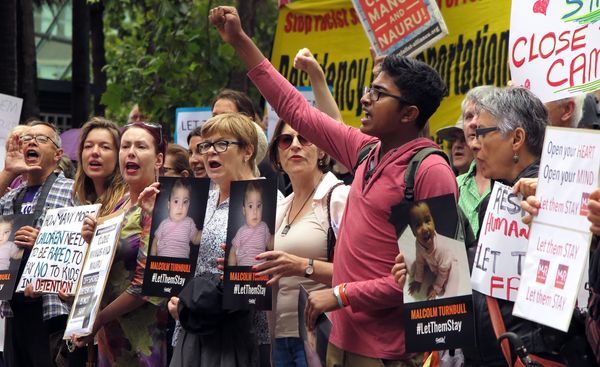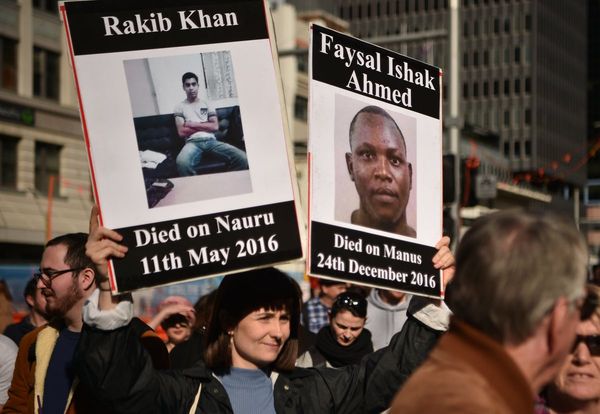WASHINGTON – President Joe Biden’s administration is working to equip schools across the country to serve as vaccination sites to help inoculate children from COVID-19 more quickly and ease the burden on parents.
With children ages 12 and up eligible to receive the Pfizer vaccine as of this week, the administration says it is assisting pharmacies and community health centers that are offering clinics at or near schools wherever feasible as part of a shift in strategy that puts added emphasis on making vaccine access more convenient.
“Schools are the center of these kids’ lives and their families’ lives, and we see them as a critical component of getting this group vaccinated,” Sonya Bernstein, the White House’s COVID-19 senior policy adviser, said in an interview.
Experts say schools are among the best locations for children to receive COVID-19 vaccinations, because they have spacious locations such as gymnasiums and auditoriums. Shots can also be administered during the day while parents who have provided consent are at work.
But few schools have the necessary storage and cooling capabilities to administer the vaccine, and many do not have or are sharing school nurses. Local pharmacies and health care providers are stepping in to help make up for those shortfalls.
Bernstein said there are several approaches to utilizing schools, from administering shots at a nearby pharmacy that reserves a day of appointments for students and staff to pharmacies setting up vaccination clinics on site at schools.
“There are lots of different ways to make that model work,” Bernstein said.
Guilford County Schools in Greensboro, N.C., plans to hold vaccination events on site at area high schools beginning on Friday. Middle school students who are age-approved and have their parents’ permission will be transported by bus to those high schools during the school day, superintendent Sharon Contreras said. Cone Health, a local network of health providers, is operating the clinics.
Contreras said that her district has been asking to turn its schools into vaccination locations for some time. Vaccination sites in the area such as a Federal Emergency Management Agency mass vaccination site have been difficult for working parents to get to, she said, noting that many families in her district do not have easy access to transportation.
“If we want students and staff to return to school and remain healthy and safe, we have to encourage parents and students to adhere to the advice of these public health experts and to get vaccinated,” Contreras said.
SHIFTING FOCUS
The Biden administration is shifting its focus from mass vaccination sites to locations that are more accessible. FEMA is supporting state and local governments that have plans to operate mobile and pop-up vaccination sites at fairs and beaches this summer, the White House said.
The administration is also making it a priority to get vaccines to pediatricians and family doctors, in addition to supplying pharmacies that are part of its federal program.
“We’re mindful that we’re headed into the summer months here. So we think that schools will be one part of the overall picture as to where adolescents will get vaccinated and an important part,” Bernstein said. “But I don’t think they’ll be the largest share by any means as we focus on the work that we need to do in the next two months in particular.”
Randi Weingarten, president of the American Federation of Teachers, said the federal government needs to direct its focus to places that families and parents trust.
“So why not have pop ups, why not have summer open houses and summer fairs in and around schools,” Weingarten said. “But you need to have people talking to each other, and families have to see that the vaccines have been effective and that people haven’t gotten sick and they haven’t gotten secondary effects.”
Vaccinating students at schools “facilitates the process tremendously,” said Daniel Domenech, executive director of the School Superintendents Association. “That definitely will increase the number of students that are vaccinated, and they’ll know, obviously, who the students are that are vaccinated.”
The FDA approved Pfizer’s vaccine for emergency use in children ages 12-15 on Monday. The company says it will seek authorization for its vaccine to be administered to younger children in September. Pfizer’s vaccine is already approved for emergency use for older teenagers.
The Biden administration is seeking to facilitate a speedier vaccine rollout for children than it did adults now that vaccine supply has increased and demand has decreased.
Biden said Wednesday that the administration had 15,000 pharmacies lined up for their effort, and encouraged parents to get their children vaccinated right away.
“The bottom line is this: The vaccine for kids between the ages of 12 and 15 are safe, effective, easy, fast and free,” Biden said.
Pharmacies have already begun to contact schools on their own about vaccinating children. A high school in Chattanooga, Tenn., was able to set up a vaccination clinic during the school day after a local pharmacy contacted the school about extra doses, Hamilton County Schools superintendent Bryan Johnson said.
Johnson said that roughly a quarter of age-eligible students participated, and that the event could serve as a model for vaccinating more of the area’s children. Another high school in the district is working with a local pharmacy now to hold a second vaccination event, he said.
“Based on these kinds of beta tests, we’re going to look at what we can bring to scale,” Johnson said.
CHALLENGES AWAIT
Supply chain experts and epidemiologists expect distribution to go relatively smoothly for newly eligible adolescents, with an infrastructure for distributing the shots well established across the country. Still, there may be some challenges along the way.
“For the most part, they’re used to going to their pediatricians. But that also creates some challenges with regard to the cold chain,” said Dr. Eric Toner, senior scholar at the Johns Hopkins Center for Health Security, referring to the ultra-cold storage conditions required for Pfizer’s vaccine. “Some pediatric practices, like those that are associated with major medical centers, could deal with that, but the small pediatric office in a small town probably could not. So that’s going to be a little bit of a challenge.”
Alongside authorization of Pfizer’s vaccine for those ages 12 and older, the Centers for Disease Control and Prevention launched an effort to enroll more pediatricians as COVID-19 vaccination providers.
Administration officials expect it will take time to develop a strategy for delivering large shipments of vaccine doses to pediatricians’ offices, especially in rural areas.
“We know that families and parents trust their pediatricians,” Bernstein said. “We see survey data that says that they want their child to be vaccinated at their local pediatrician’s office, so this is an area of big focus for us, is both partnering with pediatricians to make sure that they have the information that they need and getting them the resources.”
Leadership at the Centers for Disease Control and Prevention are also hoping that parents who bring their children in to their doctor for COVID-19 vaccines will take advantage of the appointments to get them other available immunizations, such as measles and HPV vaccines, as well as the flu vaccine in the fall once they become available for the coming season.
An independent group of scientists advising the CDC said Wednesday that COVID-19 vaccines “may now be administered without regard to timing” alongside other vaccines.
Immunization rates for these other vaccines have dropped dramatically over the past year, leading some in the CDC to fear that a resumption of in-person schooling could lead to other, avoidable health crises.
“What I will say is, we’re over 11 million vaccines behind in this country – routine vaccines – and among the highest rates of people who are behind are our adolescent population,” Dr. Rochelle Walensky, director of the CDC, said in an interview.







